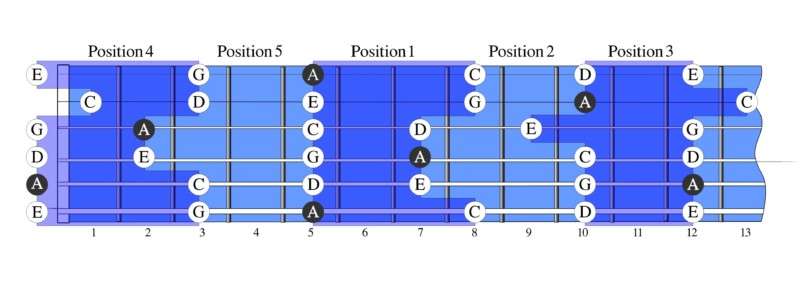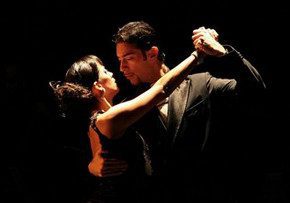
How to overcome technical difficulties in playing the piano? Useful for students of music schools and colleges
Contents
 It happens that insufficient technical training does not allow the pianist to play what he wants. Therefore, you need to do exercises to develop technique every day, at least for half an hour. Only then is everything complex resolved and achieved, and technical freedom appears, allowing you to forget about the difficulties and completely devote yourself to the embodiment of the musical image.
It happens that insufficient technical training does not allow the pianist to play what he wants. Therefore, you need to do exercises to develop technique every day, at least for half an hour. Only then is everything complex resolved and achieved, and technical freedom appears, allowing you to forget about the difficulties and completely devote yourself to the embodiment of the musical image.
In this article we will talk about several effective methods for overcoming technical difficulties. First, the key idea. It is this: anything complex consists of something simple. And it’s no secret! The main feature of all the methods that will be presented to you will be to work on breaking down complex places into simple elements, working through these elements separately, and then connecting simple things together into a whole. I hope you’re not confused!
So, what methods of technical work on the piano will we talk about? About. Now about everything consistently and in detail. We won’t discuss it – everything is clear here: playing parts of the right and left hands separately is vital.
Stop method
A multi-choice “stop” exercise consists of dividing a passage into several parts (even two). You just need to divide it not haphazardly, but so that each part separately is easy to play. Typically, the point of division is the note on which the first finger is placed or the place where you need to seriously move the hand (this is called changing position).
A given number of notes are played at a fast tempo, then we stop to control our movements and prepare the next “race”. The stop itself frees up the hand as much as possible and gives time to concentrate in preparation for the next passage.
Sometimes the stops are chosen according to the rhythmic pattern of the musical piece (for example, every four sixteenths). In this case, after working on individual fragments, they can be glued together – that is, connected in order to stop twice as often (no longer after 4 notes, but after 8).
Sometimes stops are made for other reasons. For example, a controlled stop in front of the “problem” finger. Let’s say, some fourth or second finger does not clearly play its notes in a passage, then we specially highlight it – we stop in front of it and make its preparation: a swing, an “auftakt”, or we simply rehearse (that is, repeat) it several times (“play already, such a dog!”).
During classes, extreme composure is required – you should mentally imagine the group (internally anticipate) so as not to miss a stop. In this case, the hand should be free, sound production should be smooth, clear and light. The exercise can be varied, it contributes to the rapid assimilation of text and fingering. Movements are automated, freedom and virtuosity in performance appear.
When going through a passage, it is important not to clamp your hand, knock or slide superficially over the keys. Each stop must be worked at least 5 times (this will take a lot of time, but will give the desired result).
Playing scales in all keys and types
Scales are learned in pairs – minor and major parallel and played at any tempo in octave, third, sixth and decimal. Together with scales, short and long arpeggios, double notes and seventh chords with inversions are studied.
Let’s tell you a secret: scales are everything for a pianist! Here you have fluency, here you have strength, here you have endurance, clarity, evenness, and many other useful features. So just love working on scales – it’s really enjoyable. Imagine it’s a massage for your fingers. But you love them, right? Play one scale in all types every day, and everything will be great! The emphasis is on the keys in which the works currently on the program are written.
The hands should not be clasped while performing scales (they should never be clasped at all), the sound is strong (but musical), and the synchronization is perfect. The shoulders are not raised, the elbows are not pressed to the body (these are signals of tightness and technical errors).
When playing arpeggios, you should not allow “extra” body movements. The fact is that these very movements of the body replace the true and necessary movements of the hands. Why do they move their body? Because they are trying to move across the keyboard, from the small octave to the fourth, with their elbows pressed to their body. That’s no good! It’s not the body that needs to move, it’s the arms that need to move. When playing an arpeggio, the movement of your hand should resemble the movement of a violinist at the moment when he smoothly moves the bow (only the trajectory of the violinist’s hand is diagonal, and your trajectory will be horizontal, so it’s probably better to look at these movements even from non-violinists, and among cellists).
Increasing and decreasing tempo
He who knows how to think quickly can play quickly! This is the simple truth and the key to this skill. If you want to play a complex virtuoso piece at a fast tempo without any “accidents,” then you need to learn to play it even faster than required, while maintaining phrasing, pedaling, dynamics and everything else. The main goal of using this method is to learn to control the process of playing at a fast pace.
You can play the entire piece at a higher tempo, or you can work through only individual complex passages in the same way. However, there is one condition and rule. Harmony and order should reign in the “kitchen” of your studies. It is unacceptable to play only fast or only slowly. The rule is this: no matter how many times we play a piece quickly, we play it slowly the same number of times!
We all know about slow play, but for some reason sometimes we neglect it when it seems to us that everything is working out just the way it is. Remember: playing slow is playing smart. And if you are not able to play a piece you have learned by heart in slow motion, then you have not learned it properly! Many tasks are solved at a slow pace – synchronization, pedaling, intonation, fingering, control, and hearing. Choose one direction and follow it in slow motion.
Exchange between hands
If in the left hand (for example) there is a technically inconvenient pattern, it is advisable to play it an octave higher than the right, in order to concentrate attention on this phrase. Another option is to completely change hands (but this is not suitable for every piece). That is, the part of the right hand is learned with the left and vice versa – the fingering, of course, changes. The exercise is very difficult and requires a lot of patience. As a result, not only technical “inadequacy” is destroyed, but also auditory differentiation arises – the ear almost automatically separates the melody from the accompaniment, preventing them from oppressing each other.
Accumulation method
We have already said a few words about the accumulation method when we discussed the game with stops. It consists in the fact that the passage is not played all at once, but gradually – first 2-3 notes, then the rest are added to them one by one until the entire passage is played with separate hands and together. The fingering, dynamics and strokes are strictly the same (author’s or editor’s).
By the way, you can accumulate not only from the beginning of the passage, but also from its end. In general, it is useful to study the ends of passages separately. Well, if you have worked through a difficult place using the accumulation method from left to right and from right to left, then you will not falter, even if you want to falter.




